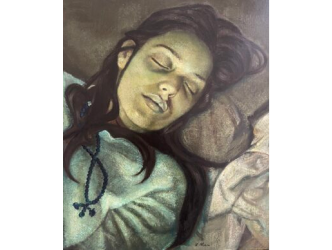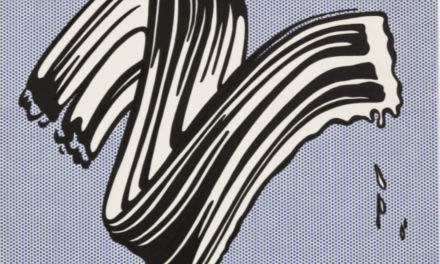Waiting for the museums to reopen

In Paris there is a place that is absolutely unique in the world, which exudes an aura of art history and the mysteries of past masters. It is little known among the general public, and residents of the French capital can visit to experience the powerful sensation of seeing art in person, while waiting for the museums to reopen.
Built by the Marquis de Louvois

Behind the garden of the Palais Royal, in a fabulous building at the end of the courtyard built in the 1670s by the Marquis de Louvois, one of the ministers of Louis XIV, there is a space occupied by a family who specialize in classical drawings of great international renown. The Galerie de Bayser was founded in 1936 when the grandfather, Patrick, began selling the drawings he had in his possession to pay off his debts. Time seems to stand still in this place.
Not the white cube model

It feels a million miles away from the white cube model of contemporary galleries. In cosy and comfortable surroundings with décor reminiscent of a 19th-century gallery, complete with wooden panelling, tapestries, an enormous sofa, and even a winter garden, there are precious drawings exhibited everywhere along with, here and there, sculptures and paintings.
4 Bayser brothers
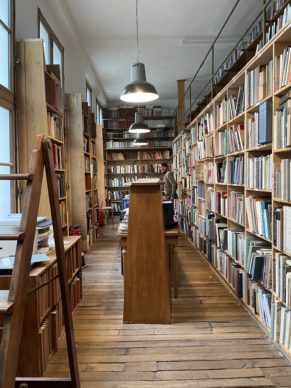
Those lucky enough to explore the full extent of the spaces occupied by the four Bayser brothers will not only see a pencil portrait of an elegant woman by Ingres at the bend of a hallway – he used to supplement his income through his virtuosity as a portraitist – or a scene of dancers rehearsing, immortalized by the artist obsessed with young ballet students, Edgar Degas, but will also come across the large library with its wooden stepladders, the very place where these experts come to research the origins of such and such a drawing.
Eugène Delacroix

Eugène Delacaroix
Two rooms are reserved for exhibitions. Here we encounter nothing, for example, except for the portrait by Eugene Delacroix of a man wearing a turban with a velvet gaze, which dates from his Moroccan period.
Vigée -Lebrun
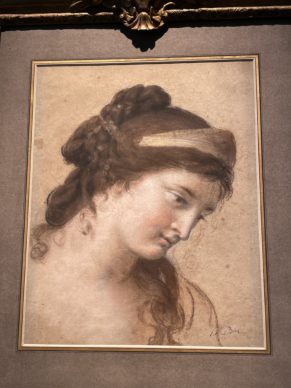
Elisabeth Vigée-Lebrun

Elisabeth Vigée-Lebrun
Nearby there is a study of Juno’s head displayed in pastel, inspired by antiquity. Don’t trust the very visible signature of Pierre-Paul Prudhon (1758-1823). Louis de Payser explains that it was while visiting the retrospective on Elisabeth Vigée-Lebrun (1755-1842) at the Grand-Palais in 2015 that they were able to determine that she was in fact the true author of the drawing. It is a preparatory study for a painting from 1781, “Junon empruntant la ceinture de Vénus”, by Vigée-Lebrun, the favourite portraitist of Marie-Antoinette.
Federico Barocci
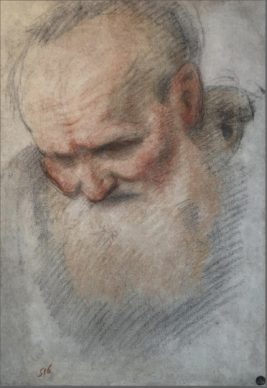
Federico Barocci


Every month the Galerie de Bayser publishes a mini catalogue and dedicates an exhibition to a subject that showcases their precious collections. This time the Baysers’ theme is preparatory studies.
This is what unites the fourteen-odd sketches on display, featuring a study of an old, bearded man by the famous Italian mannerist Federico Barocci (1535-1612), which was part of the creation of a painting for the altar of the Church of San Vitale in Ravenna. This spectacular work, which involved over 60 preparatory studies, can now be found at the Brera museum in Milan.

Edgar Degas
We slowly look at one drawing after another, wide-eyed. The turbulence of the outside world has no hold here. Time stands still in a wonderful way on the first floor at the end of the courtyard at number 69 Rue Sainte Anne.
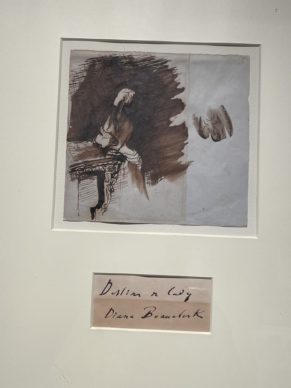
Victor Hugo
Support independent news on art.
Your contribution : Make a monthly commitment to support JB Reports or a one off contribution as and when you feel like it. Choose the option that suits you best.
Need to cancel a recurring donation? Please go here.
The donation is considered to be a subscription for a fee set by the donor and for a duration also set by the donor.



